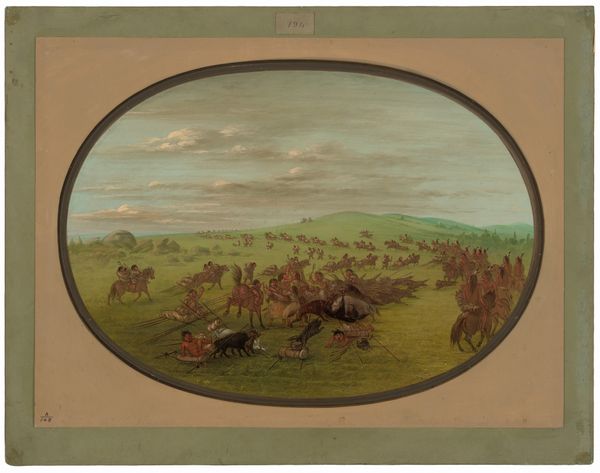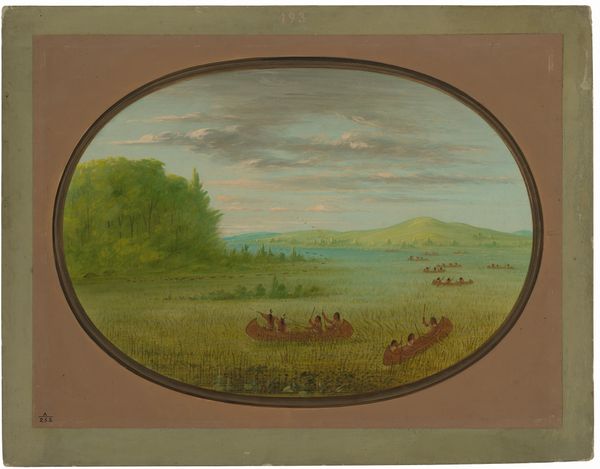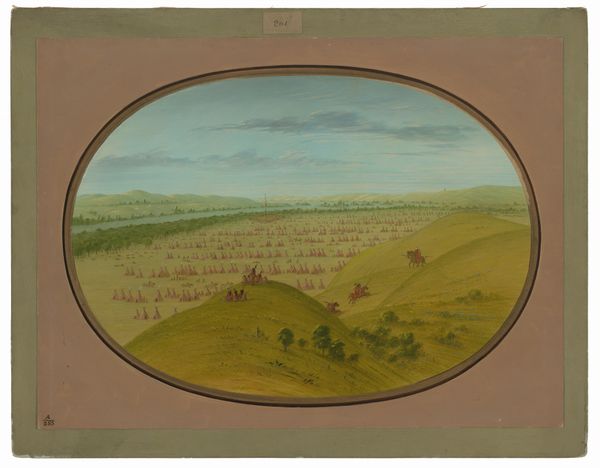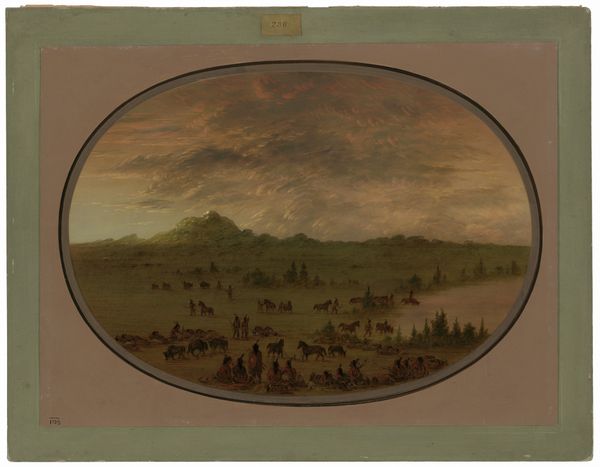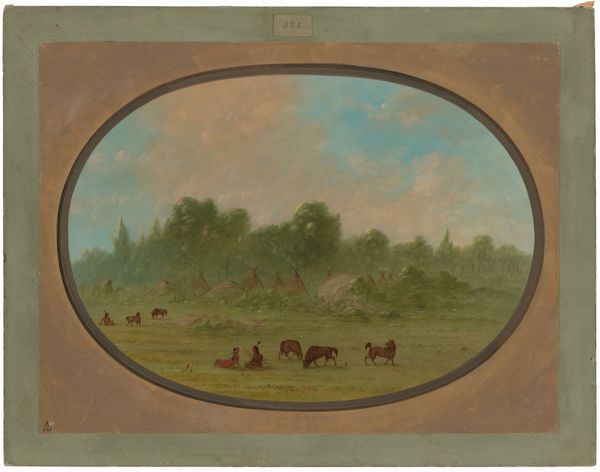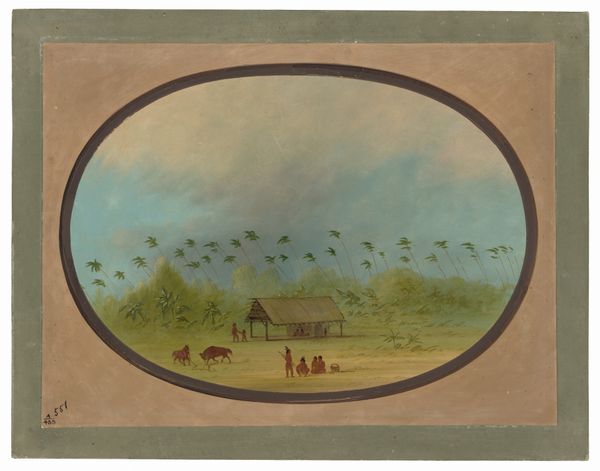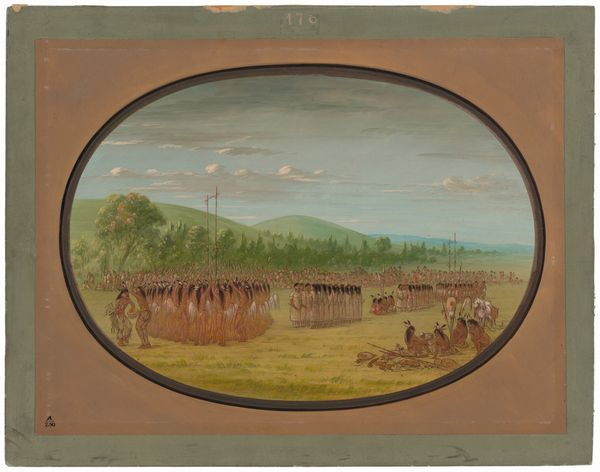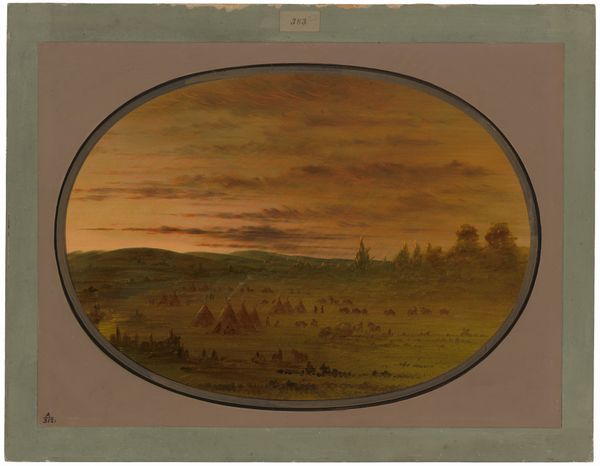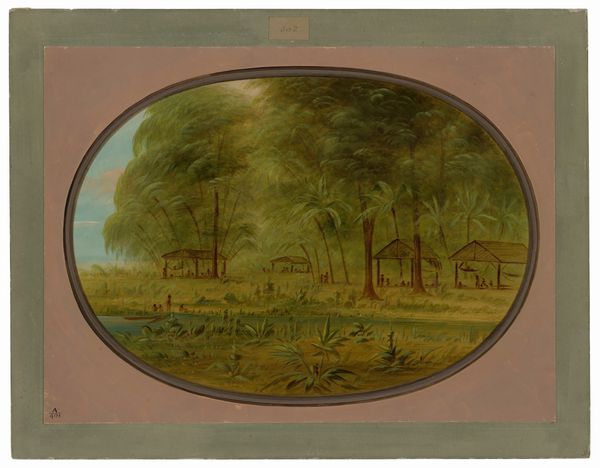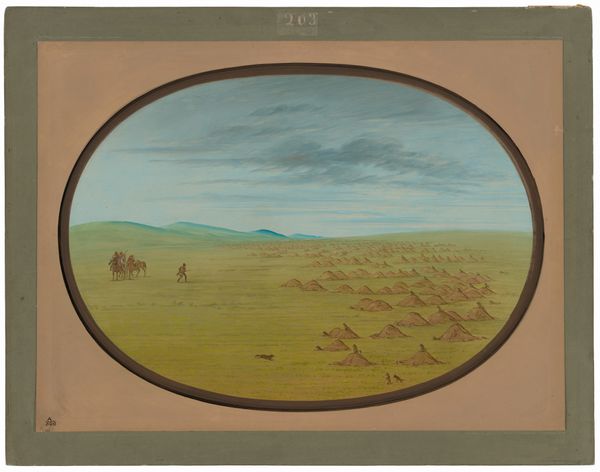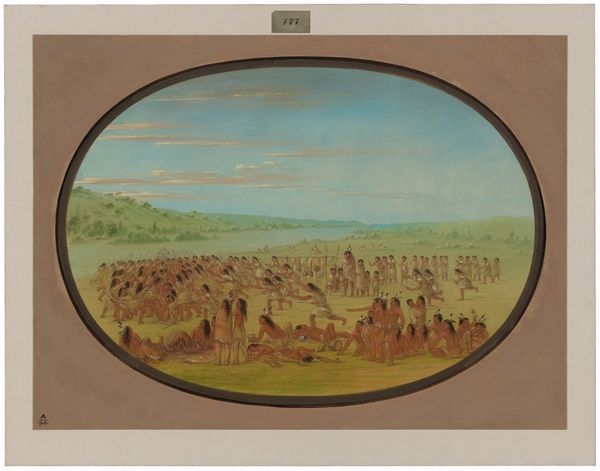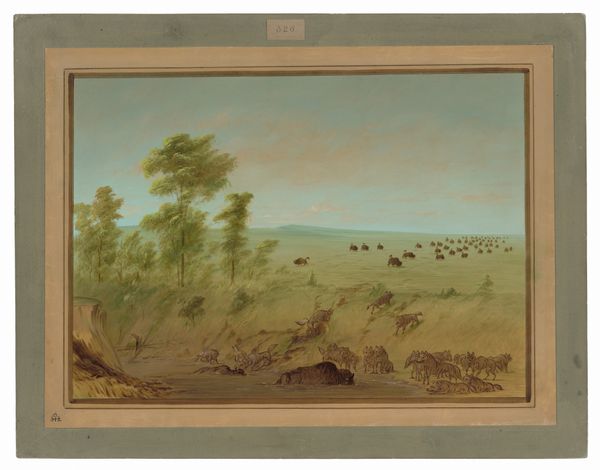
painting, gouache
#
water colours
#
narrative-art
#
painting
#
gouache
#
landscape
#
figuration
#
watercolor
Dimensions: overall: 47.3 x 63.8 cm (18 5/8 x 25 1/8 in.)
Copyright: National Gallery of Art: CC0 1.0
Editor: Here we have George Catlin's watercolor, "Sham Fight of the Camanchees," created between 1861 and 1869. It has this somewhat dreamlike quality, a bit removed from reality with all its faded pastel tones. What story do you think this artwork tells? Curator: That 'dreamlike' quality is precisely the point, isn't it? Catlin offers a vision seemingly detached from the brutal realities of settler colonialism, romanticizing Indigenous life even as it was under immense pressure. Consider the title – a 'sham fight'. Who is being fooled here? Is Catlin presenting a sanitized performance for a white audience, obscuring the violence and dispossession of Indigenous peoples? Editor: So you're saying the title might be ironic? It seems like it could be suggesting that this is a light-hearted depiction of something with a much darker side. Curator: Absolutely. Think about what was happening during this period: westward expansion, the forced removal of tribes, broken treaties… These so-called "sham fights" were being extinguished under the onslaught of the United States government. And who benefits from circulating such sanitized images? Does it perhaps relieve the guilt or responsibility of the colonizers? Editor: That’s a perspective I hadn’t fully considered. It does seem to subtly erase a very real, and very violent, history. What about Catlin’s personal perspective? Curator: We have to interrogate Catlin’s own positionality. Was he genuinely trying to document a vanishing culture, or was he complicit in perpetuating harmful stereotypes? His work becomes part of a complex visual archive that we must read critically, always questioning power dynamics and narrative control. Who gets to tell the story, and what are they leaving out? Editor: It's interesting to consider how seemingly straightforward images can be so layered with meaning and reflect larger social injustices. Thanks for unpacking it! Curator: It's a process, really! Seeing art as more than just surface aesthetics – but as a conversation reflecting, and shaping, history and politics.
Comments
No comments
Be the first to comment and join the conversation on the ultimate creative platform.
